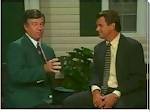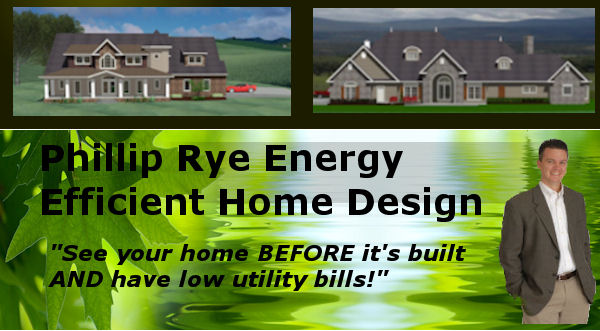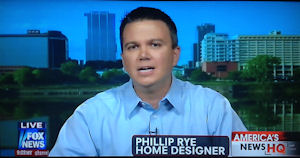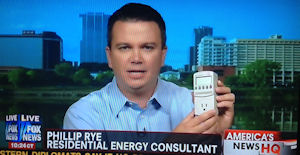Why
Is Your House Cold?
================================================
The Home Energy
Saver
http://www.dougrye.com
http://www.philliprye.com
http://www.rye-homes.com
================================================
In This Issue:
| 1. Introduction |
| 2.
Feature Article
"
Why is your house cold?" |
| 4.
Bonus Article
"Let the Queen of Clean Help You Conquer
Tough Cleaning Jobs" |
| 5. Energy Saving Tips |
| 6. Tell
us what you think |
Dear Friend,
The Home Energy Saver is a newsletter dedicated to showing you how to have the most comfortable
home for you and your family and still have low utility bills.
Since the release of my first VHS, literally
thousands of have grabbed their copies and based on the responses, have really enjoyed the content and saved
hundreds of dollars on their utility bills. My home energy saving VHS/DVD is jam packed with information that
is guaranteed to lower your utility bills.
Why sacrifice comfort for lower utility bills? Isn't it time that you took control of your
utility bills?
| |
Using my proven techniques, discover how to save energy and money while doing
your part to help save the environment. No matter what kind of home you have, or plan
to have, this information applies to you. Gain the knowledge of knowing why your
utility bills are so high and find out precisely what you can do to lower
them.
If you want to greatly reduce 75% of your utility bill, visit
http://www.dougrye.com.
|
 |
View
video clip
(high speed connection recommended)
Doug Rye with Co-host Ron Sherman
|
==================================================================
|
You'll Learn These Key Points and Their
Benefits:
 |
Air
Infiltration: How air infiltration can greatly
increase your utility bill and greatly decrease
your comfort.
View Video Clip ..
|
 |
House Framing:
A simple framing technique that can
save you
$200 in wood studs and gives you free
insulation without changing the stability of you
home. |
 |
Caulking: Do you have the
right caulk? You will learn where to caulk
to stop outside air infiltration which leads to
higher utility bills. You will discover
places to caulk that most people have never even
thought of.
|
 |
Insulation: Discover one change in
your home that can lower your
heating and cooling bill by
20%! You will
learn how 1/16" of cellulose insulation can
stop more air infiltration than 3" of
fiberglass insulation.
|
 |
Windows and
Doors: Are you using the most
energy efficient window and door? Learn
how French doors can be energy wasters and
how to fix them and exactly what to look for
in an energy efficient window.
|
 |
Geothermal
- What is required to efficiently use
geothermal
energy,
geothermal energy and how it
works
,
and geothermal benefits and
requirements.
|
 |
How energy-efficient lights and energy-efficient
recessed lights can save you money. Recessed
lighting can be one of the biggest energy wasters
in your home, because most recessed lights cannot
be insulated.
|
 |
How too much attic ventilation can actually
INCREASE your utility bill. Excessive attic
ventilation can draw conditioned air out of your
home.
|
 |
How to stop air from entering from the outside in
both new and existing homes. Did you know
that on the average residential home, 35%
of the total heating and cooling load is for
outside air
infiltration?
|
 |
How to use geothermal
energy – learn the benefits and risks of
geothermal, how a geothermal energy diagram
looks, and how a geothermal unit gives you a
percentage of your hot water FREE.
A geothermal
heating and cooling system is four times more
efficient than a gas furnace and has twice the life
expectancy of the average heating and cooling
unit.
|
 |
How cellulose
insulation or recycled newspaper is
used for noise control, sound-insulation
products, and home interior wall sound
insulation.
|
|
|
Claim Your Copy of Doug Rye's Home Energy Saving DVD Today!
"The Home Energy Saver" newsletter is brought to you by Phillip Rye and nationally recognized
energy consultant Doug Rye.
Phillip Rye is a licensed Civil Engineer and has been researching energy efficiency in the
United States for the past 10 years.
Doug Rye is a licensed architect and is considered to be the
"Energy Expert" all across the United States. Doug is also the host of the popular "Home Remedies" talk show
that has been on the air for 15 years in 14 states. You can listen live on the internet at, http://www.1037thebuzz.com on Saturday 9-10 a.m. Central Time.
|
===================== FEATURE EDITORIAL
======================
"Why is your house cold?"
==============================================================
How many of you have experienced this situation?
As the wind blows outside and the temperature drops, you get chilled
even while you are standing in the middle of your home.
How does this happen?
The three biggest problems with the comfort of your home are,
1) air infiltration
2) air infiltration
3) air infiltration
The total air infiltration in an average house is the equivalent of having a door or window open every day of your life.
Now, you've probably heard it said that a house needs to breathe. In all my years in this
work, I've never had anyone really explain why a house needs to breathe or even what that
statement really means. Another word for house breathing is, simply put, leaks.
Just think with me for a moment. If you can keep the cold air from getting in, it won't
take as much to heat your house. Not to mention the fact that you would be a lot more
comfortable in your home. So where does the air come in?
Think of it this way. Anywhere an ant can get in, air can get in. Here are a few major
problem areas:
-
Where your wall touches your slab.
-
Cracks between the wood framing in your home's
walls.
-
Around electrical receptacles and light switches in your house,
even on interior walls. (When the north wind is blowing, go feel the
electrical outlets and switches on your north wall.)
-
Holes and leaks around your sink plumbing. Forget the ants,
sometimes a mouse can get through these holes.
-
Gas and fireplace flues.
-
Recessed can lights that are not IC-rated. Between 3 and 10
cubic feet per minute of air will pass through one of these lights. A typical
plastic garbage bag is 3 cubic feet. So that means that three garbage bags
full of air can leak out of one of those lights every
minute.
-
The return air system of your heating/cooling unit. In the
average house, gigantic amounts of air enter through this
system.
So how are you going to stop the cold air from penetrating your home this winter? The
solution is mostly labor and a little bit material. Now, say this with me.
-
Caulk it
-
Caulk it
-
Caulk it
For big holes, such as those under the sink, simply use expandable
foam.
For the smaller cracks, use a clear siliconized caulk.
For electrical outlets and light switches, install the insulated foam gaskets and
childproof plug inserts.
Installing cellulose insulation in your attic will also help reduce air infiltration from
your attic space.
For a great solution to stopping air infiltration through attic pull down stairs or doors
that back up to an attic, visit http://www.attictent.com
|
|
In the meantime, if you have questions, just give me a call at my office
at 501-653-7931 or e-mail me at info@philliprye.com. Either me or my son Phillip
will be glad to help you.
Thanks for reading my Home Energy Saver newsletter and I know that
applying these techniques will SAVE YOU MONEY.
God Bless,

Be sure to visit my website at http://ww.dougrye.com and
order my video/DVD that is jam-packed with all the energy saving techniques that I
teach. It will be one of the best investments you've ever made - Guaranteed. Not
to mention the FREE e-book downloads with
your order.
"The Home Energy Saver" is published monthly by Phillip Rye and
nationally recognized energy consultant Doug Rye.
|
|
=================================================
Let the Queen of Clean Help You Conquer Tough Cleaning
Jobs
=================================================
Kitchens and bathrooms are the rooms that present the biggest cleaning
challenges. They get a lot of use, and they are exposed to a lot of bacteria and
germs. You may think you need a cabinet full of various cleaning products and an
entire day to tackle these tough areas, but Linda Cobb, a.k.a. the Queen of Clean,
begs to differ.
"Cleaning doesn't have to be a miserable experience," says The Queen of Clean, Linda Cobb,
a New York Times best-selling author and host of DIY Do It Yourself Network's series,
Talking Dirty with the Queen of Clean. "Don't get me wrong -- a good, thorough cleaning is
work. However, there are some things you can do to make it a little easier."
Before you start cleaning, Cobb suggests getting organized by gathering all of your
cleaning products and tools in one container that can be easily carried from room to room.
One of her favorite tools is a roll of paper towels. "You can just use them and toss them,"
says the Queen. "You're not spreading dirt and germs around like you would if you used
rags." Cobb recommends Sparkle paper towels because they are strong, absorbent and wipe dry
fast. Plus, they're affordably priced.
Make sure you have everything you'll need before you start. . "You don't want to have to
stop when you're on a roll to restock your supplies," says Cobb. Include plenty of strong
trash bags, cloths, sponges and cleansers in your cleaning caddy. What you don't need is a
big collection of expensive cleaning products. Cobb stresses that your cleaning products
can and should do double duty -- you don't need a different product for each task. In fact,
you can make your own cleaning products using ingredients you probably have in your
cupboard already.
"There are so many products you can make yourself that clean really well and are
inexpensive," says Cobb. She shares some of her favorites below.
*Windows
Combine two quarts warm water and 1/2 cup corn starch. Wash windows with a sponge and dry
with Sparkle paper towels. To make a quart for a spray bottle, use one quart warm water and
1/4 cup corn starch.
* All-purpose cleanser
Make your own cleanser by combining four parts baking soda and one part 20 Mule Team Borax
laundry additive. Use it just as you would any other cleanser.
* Spray cleaner
This is perfect for most hard surfaces. Combine 1/2 teaspoon liquid dish soap, two
tablespoons lemon juice, 1/2 teaspoon washing soda, one teaspoon 20 Mule Team Borax and two
cups water. Shake well prior to using.
* Make sinks shine
To clean porcelain sinks and tubs, combine 20 Mule Team Borax and lemon juice into a
moderately thick paste. Scrub porcelain sinks and tubs with the paste and rinse well. To
tackle stains, leave paste on for a few hours or overnight. Wipe the sink dry with a
strong, absorbent Sparkle paper towel and buff for a great shine.
Now that you're stocked up, make a plan. Cobb suggests cleaning from top to bottom, since
dirt and dust from light fixtures, for example, will end up on the sink or the floor. Be
sure to finish one task completely before moving on to the next. Play your favorite CD or
radio station to help you set the pace.
Cobb says that incorporating some household chores into a daily routine can help "weekend
warrior" cleaners, who feel like cleaning robs them of their leisure time. Do one room, or
even a section of a room each day and when the weekend rolls around, you won't feel
overwhelmed," says Cobb.
And remember, you don't need a lot of expensive products in fancy bottles to make your home
a castle.
For more information on Linda Cobb and her books, visit www.queenofclean.com. To find out
about her new show on the DIY Network, visit www.DIYnetwork.com. For more information on
Sparkle paper towels, visit www.sparkletowels.com.
|
|
=================================================
Energy Saving Tips
=================================================
If you are a first-time homeowner, building a new home, or just wanting
to make changes to an older, existing home, here a some energy-saving tips for you to
consider. There is no better time to do this than at the beginning of a construction
project.
- If you are clearing a lot for a new home or considering landscaping
options, don't forget about the shade advantage trees add, as well as the
evaporative cooling their lush canopies can offer.
- Window coatings are energy saving, especially for west-facing view
windows. For most residential applications, low-emissivity (low-e) coatings are
sufficient. They can cut heat gain by up to 25 percent without changing the
window's appearance.
- When building a new home, try to keep glass area at 10 percent to 12
percent of the floor area of the house (example: 2,000 sq.ft. x 10% = 200 sq.ft.
of glass).
More energy saving tips to come in the next Home Energy Saver
newsletter.
|
|
=================================================
Tell Us What You Think!
=================================================
We would love to hear what you think of this issue of The Home
Energy Saver Newsletter. And of course, if you have any suggestions for
upcoming issues that you'd like to share with us, please send those, too!
Either me or my son Phillip will be happy to help you.
Just e-mail me at: mailto:info@philliprye.com
=================================================
You are subscribed to The Home Energy Saver Newsletter as
<$email$>.
|
Back to Top
Are you building a home and looking for a custom, energy efficient house plan? Visit my home
design site at www.rye-homes.com for more information.

|








